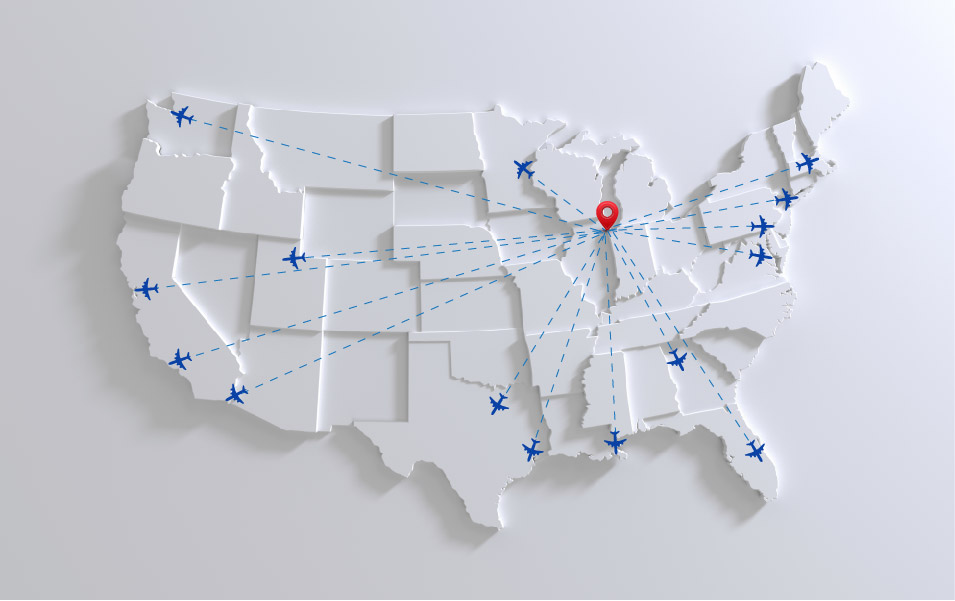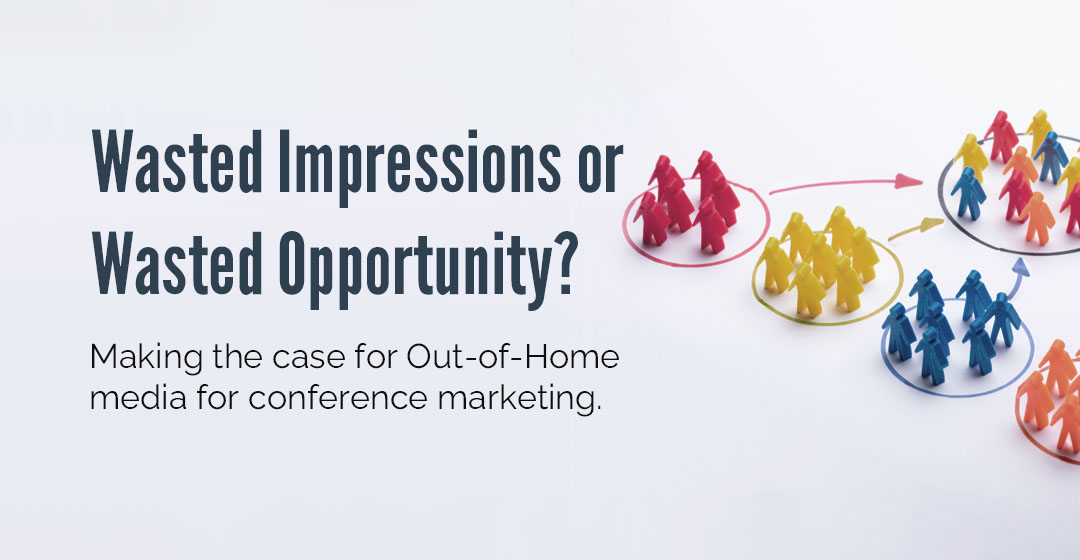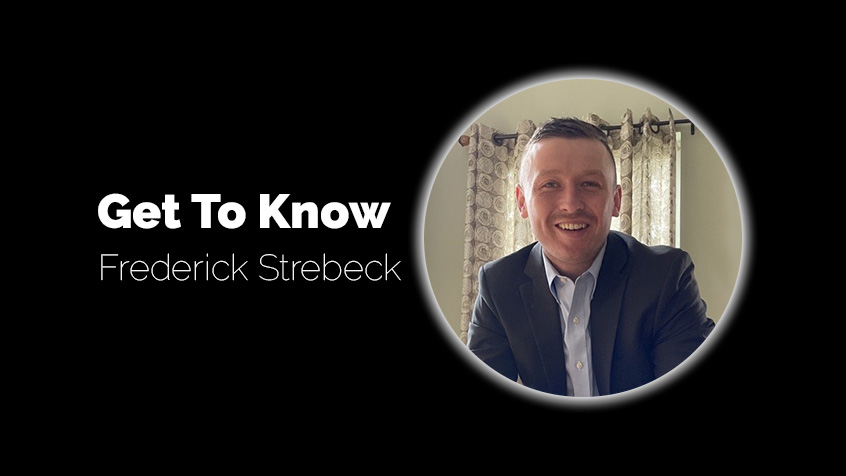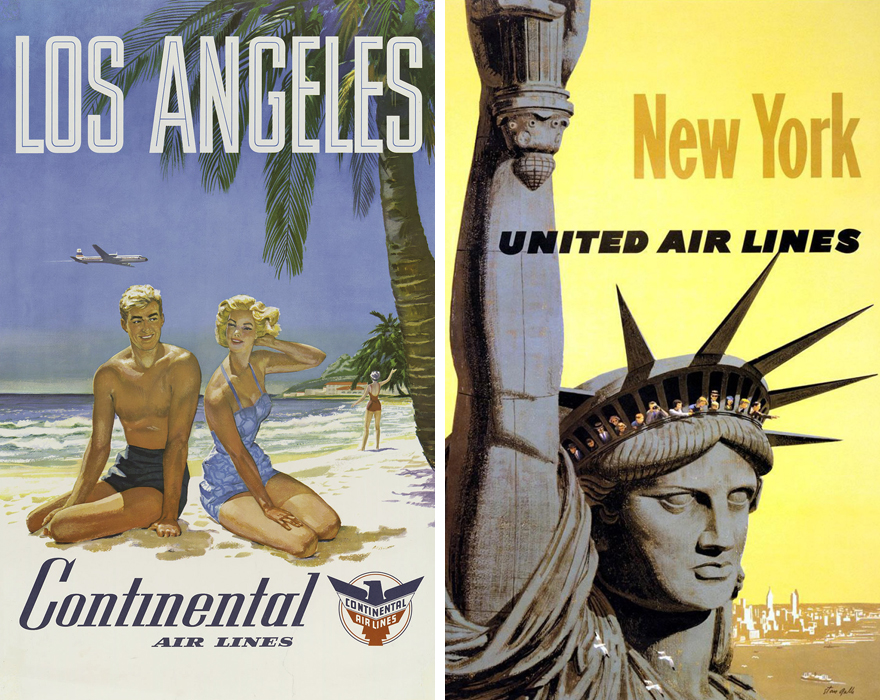A few weeks ago, we talked with a client about using Out-of-Home media for conference marketing, in this case, a major medical meeting. We reviewed the media options available in the different markets and which ones we felt were the strongest for reaching the conference attendees.
Then someone asked: “What about wasted impressions?”.
A fair question.
We explained that based on our 30+ years of experience in the field observing the attendees’ movements, we have identified the best media choices to intercept them as they move through the market. This media will reach the vast majority of the attendees multiple times during their stay.
This made sense to our client, and based on our successful history with them, it was enough to ease that individual’s concerns.
But the question lingered in our heads.
In a primary market like Chicago, San Diego, or New Orleans, people other than those in town for the conference will undoubtedly move through those spaces and view the media intended to reach the attendees.
Are there wasted impressions? Sure. But that doesn’t tell the whole story.
So, we started thinking about the implications of that question and decided to take a deeper look at what it means to use Out-of-Home media for conference marketing. Major medical conferences draw attendees from all over the country and even beyond. There may be some wasted impressions, but what if you tried to reach all those attendees in their home markets?
What happens when the attendees go home? What would it take to reach them there? What would it cost? And most importantly… what about those wasted impressions? Not to mention the wasted dollars… Let’s take a look at a hypothetical conference marketing situation.

Where Are Conference Attendees Coming From?
If we look at the top ten medical conferences in the U.S., the average attendance is 38,498 people.
Let’s assume that the attendees are a representative sample of the U.S. population and that the place they call home breaks out along similar lines. That is to say, the percentage of attendees from California is probably about the same as the percentage of the U.S. population from California.
| State | Total Population | % of U.S. Population |
| California | 38,889,770 | 11.58% |
| Texas | 30,976,754 | 9.22% |
| Florida | 22,975,931 | 6.84% |
| New York | 19,469,232 | 5.80% |
| Pennsylvania | 12,951,275 | 3.86% |
| Illinois | 12,516,863 | 3.73% |
| Ohio | 11,812,173 | 3.52% |
| Georgia | 11,145,304 | 3.32% |
| North Carolina | 10,975,017 | 3.27% |
| Michigan | 10,041,241 | 2.99% |
Given that, about 11% of the attendees came to the conference from California. So, we’re looking at targeting about 4,510 conference attendees who are now spread out across the entire state of California.
For the sake of argument, we’ll say that those doctors came from the three major metros in California – Los Angeles, San Francisco, and San Diego. They are certainly spread out more widely than that – which would make our experiment even more compelling – but for now, let’s limit it to those three. So, how many attendees came from each of those markets?
| City | Population | % of Total | Approx # of Attendees from Mkt |
| Los Angeles | 19,000,000 | 71% | 3183 |
| San Diego | 3,300,000 | 12% | 553 |
| San Francisco | 4,620,000 | 17% | 774 |
| Total | 26,920,000 | 4510 |
If we assume that those doctors are spread evenly across each of these markets, then we will have to provide extensive coverage to reach them all. That means we will need quite a bit of inventory.
Wasted Impressions: At the Conference Vs. In Their Home Markets:
So, what would it take to reach all those doctors back home in Los Angeles, San Diego, and San Francisco? (Keeping in mind that’s just one state) Well, we ran some numbers, of course.
| City | # of Bulletins for 100 TRP | Avg Bulletin Cost/Month | Est. Cost/Market |
| Los Angeles | 14 | $17,500 | $245,000 |
| San Diego | 18 | $17,750 | $319,500 |
| San Francisco | 10 | $22,700 | $227,000 |
| Total | 42 | $791,500 |
$791,500 is pretty hefty price tag to reach 4,510 people.
And if you were worried about wasted impressions before, you better take a deep breath. To reach those 4,510 attendees that you had in the palm of your hand at the conference, you will end up delivering about 29,909,216 impressions…
By our reckoning, that’s about 29,904,706 or so wasted impressions.
Wasted impressions? Sure. But they are nothing compared to the wasted impressions, budget, and time trying to reach attendees in their home markets.
Now, all you have to do to reach all the attendees is replicate that across the U.S. Keep in mind that in our California example, we chose the largest group of attendees. In other states, you will need to cover similar amounts of geography to reach 485 attendees in Oregon, 227 in Nebraska, or 65 in Wyoming.
Also, remember that you will need a team dedicated to requesting, evaluating, contracting, and launching all that media, which is an additional cost. So, for those of you who are visual learners, you can either do this:

Or this…

Wasted impressions? Sure. But they are nothing compared to the wasted impressions, budget, and time trying to reach attendees in their home markets. Which seems like the more efficient plan? We’ll wait…
Or You Could Reach Them At The Conference:
Or…. You could take advantage of having a large audience segment in one place at one time.
If you applied just the budget to reach the theoretical California attendees to reach all the attendees while they are at the conference, you could own the market. Even smaller budgets can create a dominant presence depending on the market.
You can compound this whole model with the fact that the media we place around conferences and trade shows is strategically located to maximize exposure to attendees. Most attendees will see many placements multiple times daily during their stay.
So, if an attendee passes a piece of media on their way in and out of the conference center each day throughout a 3-day conference, that’s six impressions on that individual. That means your budget is 500% more effective than trying to reach them in their home markets, another factor that more than offsets any wasted impressions.
And there are other benefits to reaching conference attendees in the market:
- Reach attendees before they ever set foot in the conference center from the moment they arrive in the market.
- Establish a presence outside the conference center and exhibit floor where there is less competition for attention.
- Capitalize on the heightened awareness of conference-related materials that will make your campaign more memorable.
- Be seen as a valued partner to the professional association and a leader in the industry.
- Drive booth traffic and, by extension, lead generation.
And one final factor to consider. When they are back in their home markets, there is no booth to visit. There are no booth staff to engage them, no demos to participate in, and no education to receive. Exhibitors often spend a large portion of their marketing budget on exhibiting for just that reason. Getting attendees to their booth provides an incredible opportunity to engage one-on-one, build rapport, foster interest, and generate qualified leads that turn into business. When businesses are planning on spending an average of 1.4 million dollars on trade shows and conferences, it’s hard to put a price tag on how valuable that is, but it certainly outweighs the cost of a few wasted Out of Home impressions.
Are we using pretty broad strokes here? Yes, of course. But the underlying principle is sound. Reaching professional audiences at conferences and trade shows is one of your marketing arsenal’s most effective and essential tactics. Using Out-of-Home media for conference marketing to enhance those efforts is a high-impact, low-cost way to help maximize the ROI for your event.





